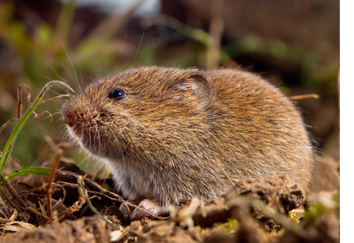Proven Vole Control Approaches to Guard Your Property
Proven Vole Control Approaches to Guard Your Property
Blog Article
Comprehensive Guide to Reliable Vole Bug Control: Invasion Identification and Treatment Techniques
In the realm of reliable bug control, vole problems present an unique obstacle that requires a strategic approach. These tiny rodents, frequently incorrect for computer mice, can unleash mayhem on gardens, grass, and plants if left unchecked. Recognizing the signs of vole existence and implementing targeted treatment techniques are essential elements of an effective pest management strategy. By checking out the subtleties of vole actions, comprehending key indications of invasion, and reviewing a variety of control alternatives, one can create a comprehensive technique to combat these elusive insects.
Understanding Vole Actions
Vole actions is defined by their tunneling habits and quick recreation rates, making them a tough bug to manage properly. Their fast reproductive price further complicates control initiatives, with ladies capable of producing numerous litters in a single year, each having numerous spawn.
Voles are most active during the early morning and night hours, investing most of their time foraging for food. Their tunneling habits not only disrupt lawns and gardens yet also make them testing to discover and remove. Understanding vole behavior is important for effective insect control approaches. By determining their burrow places, keeping track of feeding locations, and applying targeted control approaches, such as capturing or habitat alteration, vole problems can be managed efficiently.
Signs of Vole Problem

Avoidance Approaches
Carrying out reliable avoidance techniques is vital in minimizing vole problems and protecting greenery from their destructive feeding habits (vole pest control). To stop vole problems, it is necessary to start by eliminating possible food resources and shelter. Maintain grass and plant life trimmed short, eliminate weeds and particles, and keep a clean yard or lawn to make the area less attractive to voles. Installing barriers such as hardware cloth or below ground secure fencing can likewise aid discourage voles from entering particular areas. Furthermore, lowering excess dampness by dealing with leaking pipes and making certain correct water drainage can make the environment less welcoming for voles.
Routinely inspecting the property for indications of vole task, such as paths Go Here and delve openings, is essential for early detection and punctual action. If vole task is thought, take into consideration making use of traps or repellents strategically positioned near their paths. Using natural predators like snakes or owls can likewise help maintain vole populations in check. By executing a combination of these prevention gardeners, methods and property owners can successfully safeguard their vegetation from vole damages.
Non-Lethal Control Techniques
To efficiently handle vole populations while focusing on humane techniques, non-lethal control methods supply practical remedies for minimizing vole damage in yards and landscapes. One efficient approach is using physical obstacles such as hardware towel or wire mesh to shield prone plants. These obstacles can be buried a minimum of 12 inches bent and deep at a 90-degree angle to stop voles from delving underneath. In addition, environment alteration can deter voles by lowering their preferred food resources and concealing places. Keeping a well-mowed lawn, eliminating debris, and maintaining plants cut can make the setting much less attractive to voles.

Lethal Control Options
One efficient approach for dealing with vole invasions in gardens and landscapes involves the calculated use of dangerous control choices. When confronted with a serious vole invasion that non-lethal methods have actually failed to consist of, applying lethal control actions becomes essential. One generally employed lethal control alternative is making use of breeze catches. These catches are created to rapidly and humanely eliminate voles upon activation, making them a prominent selection for many gardeners and landscapers. To boost the effectiveness of breeze catches, it is advised to put them in areas where vole activity is high, such as along paths or near burrow entryways. One more deadly control choice is the application of hazardous lures specifically formulated to target voles. These lures include toxin that is consumed by the voles, resulting in their eventual demise. Nonetheless, caution should be worked out when using poisonous lures to my site stop injury to non-target animals or pets. Overall, when utilizing dangerous control choices, it is important to do so sensibly and according to regional laws to efficiently take care of vole problems.
Verdict
Finally, effective vole bug control requires a comprehensive understanding of vole habits, identification of indicators of problem, application of prevention approaches, and usage of both dangerous and non-lethal control approaches. By combining these strategies, individuals can successfully take care of vole populaces and secure their building from damage. It is necessary to deal with vole problems immediately to avoid additional problems and reduce the influence on the surrounding setting.
Given the elaborate passage systems and fast reproduction rates characteristic of voles, recognizing the signs of vole invasion becomes essential in efficient parasite control. One of the main indications of vole visibility is the existence of surface area runways or trails in yard or snow, normally regarding 1-2 inches wide, produced as voles travel between their burrows and food sources.To successfully take care of vole populations while prioritizing gentle methods, non-lethal control techniques provide useful services for reducing vole damages in gardens and landscapes.One reliable approach for attending to vole infestations in gardens and landscapes includes the critical use of deadly control choices. vole pest control.In final thought, reliable vole bug control calls for an extensive understanding of vole habits, identification of indications of invasion, application of prevention approaches, and usage of both lethal and non-lethal control methods
Report this page